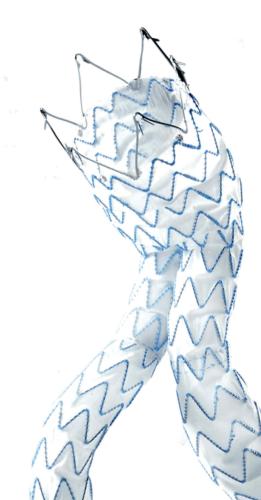
Five-year data from Medtronic’s ENGAGE global registry indicate that endovascular aneurysm repair (EVAR) outcomes are comparable between male and female patients when using the Endurant II stent graft (Medtronic).
The five-year ENGAGE global registry data were presented for the first time by Marc Schermerhorn, (Beth Israel Deaconess Medical Center, Boston, USA) in a late-breaking clinical trial at the Vascular Interventional Advances 2017 conference (VIVA; 11-14 September, Las Vegas, USA).
Schermerhorn told the VIVA audience that women have historically demonstrated worse EVAR outcomes than men due to differences between the female and male anatomies, including shorter, more angulated aortic necks, smaller aneurysms, and smaller iliac vessels. Female patients also have historically demonstrated higher rates of mortality, access complications, and endoleaks compared to men.
“It is well-known in the clinical community that women have not benefitted to the same extent as men when receiving an EVAR procedure, and in turn, have become a greatly underserved patient population,” said Schermerhorn. “Endurant is now the only stent graft system to close the outcomes gap between men and women at 30 days, one year, and five years, which sets a new benchmark for EVAR device performance and has the potential to change the treatment paradigm for female patients.”
The five-year gender subset analysis of the ENGAGE global registry included 1,263 patients (133 female and 1,130 male). The study population was comprised of females with an average age of 75.7 years with smaller diameter proximal necks and narrower access vessels. Approximately 16.5% of females compared to 11.5% of males had proximal neck lengths <15mm and 19.7% of females compared to 9% males had infrarenal neck angles of >60 degrees. The data underscore previous findings between men and women at 30 days and one year, which demonstrated consistent efficacy and safety.
The five-year data demonstrated a successful delivery and deployment rate of 99.2% in the female cohort compared to 99.5% in the male cohort (p=0.746). The study also showed consistency between genders, with:
- A freedom from aneurysm-related mortalities (ARM) in females of 100% compared to 97.5% in males (p=0.0881);
- Type Ia endoleaks were observed in 3.8% of females compared to 1.3% of males (p=0.197) at five years;
- A freedom from secondary procedures in females of 85.6% compared to 84.1% freedom from secondary procedures in males (p=0.5150);
- Aneurysm sac stability or decrease was observed in 89.6% of females compared to 89.4% of males at five years;
- A freedom from rupture rate in females of 100% compared to 98.4% in males (p=0.2263).
ENGAGE is underway at 79 sites in 30 countries and will have clinical follow up out to 10 years. The goal of ENGAGE is to gather evidence in a real-world patient population, including patients with challenging anatomy who have historically been difficult to treat, and are associated with limited eligibility for endovascular repair and higher rates of secondary interventions.











